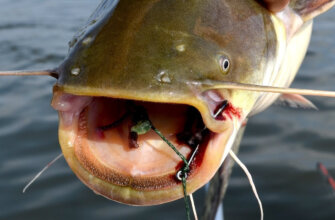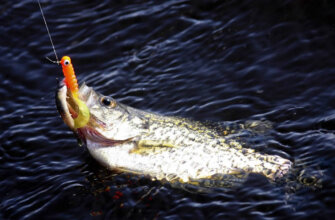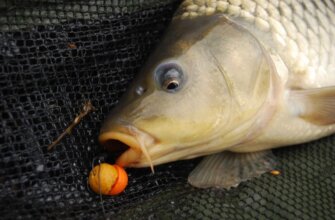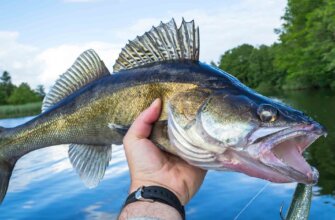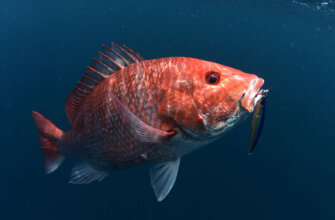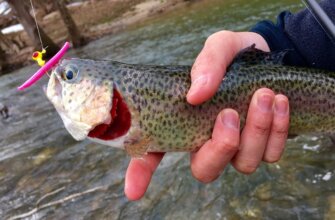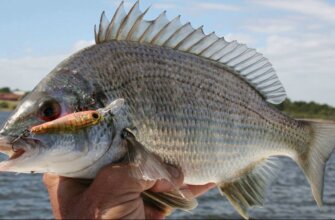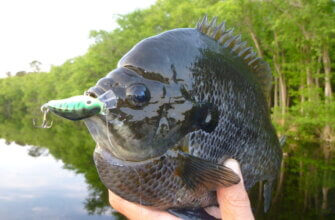Salmon fishing is a popular activity among anglers, and using the right bait can greatly increase your chances of success. There are several types of bait commonly used for salmon fishing, and the choice often depends on the fishing location, time of year, and the specific species of salmon you are targeting.
10 Best baits
When it comes to salmon fishing, there are various baits that have proven to be effective. While the effectiveness of bait can vary depending on the species of salmon, fishing location, and other factors, here is a list of 10 commonly used baits for salmon fishing:
- Salmon Roe: Fresh or cured salmon roe are a top choice for many salmon anglers due to their natural scent and appeal to salmon.
- Herring: Whole or cut herring is a popular bait, especially for targeting larger salmon species like Chinook (King) salmon.
- Anchovies: Similar to herring, anchovies are oily fish that can entice salmon. They can be used whole or cut into smaller pieces.
- Sardines: Sardines are another oily baitfish that can attract salmon. They can be fished whole or cut into chunks.
- Shrimp: Fresh or frozen shrimp is effective bait, particularly in rivers or estuaries where salmon feed on crustaceans.
- Sand Eels: Sand eels are slender baitfish that can be effective for salmon, especially in coastal waters.
- Cut Plug Herring: This involves preparing herring by cutting and rigging it in a specific way to create a wounded fish-like action that attracts salmon.
- Spinners: Spinners with flashy blades can mimic small baitfish and attract salmon’s attention. They are often used in combination with other baits.
- Plugs: Plugs are artificial lures designed to mimic the appearance and movement of fish. They can be effective in enticing salmon to strike.
- Flies: Various types of flies, such as streamers and egg patterns, can be effective when fly fishing for salmon, especially in rivers.
Salmon Roe

Salmon roe, or salmon eggs, can be a highly effective bait for salmon fishing. Fresh and high-quality salmon roe is key to attracting salmon. Look for roe that is firm, plump, and has a vibrant orange or red color. Avoid using roe that appears discolored, has a strong odor, or is excessively soft.
Many anglers use salmon roe as bait because it closely resembles the natural food source of salmon and can be highly attractive to them. Here are a few things to consider when using salmon roe for salmon fishing:
- Freshness: Fresh salmon roe is more likely to attract salmon. Look for roe that is firm and bright in color. Avoid using roe that has an off smell or is mushy.
- Cure: To enhance the effectiveness of salmon roe as bait, it’s common to cure it. Curing involves treating the roe with salt or other additives to preserve it and add scent. Curing also toughens the roe, making it more durable for casting and trolling. There are various commercial cures available, or you can make your own using salt and other ingredients.
- Presentation: Salmon roe can be fished using different techniques. One common method is to thread the roe onto a bait hook, ensuring it stays intact and doesn’t easily wash off. Another popular approach is to use a small cluster of roe called a “sac” or “spawn bag” that is secured to the hook. This can create a more natural presentation.
- Rigging: Depending on the fishing method and conditions, you may need to rig the salmon roe differently. For example, if you’re drift fishing, you’ll want to rig the roe on a sliding sinker setup to allow it to move naturally with the current. If you’re trolling, you might use a downrigger or a dodger to add action and depth to your presentation.
- Regulations: It’s important to check local fishing regulations regarding the use of salmon roe as bait. Some areas have specific rules or restrictions on using roe to ensure the conservation of salmon populations.
Herring

Herring is often used as bait for salmon fishing. Salmon are predatory fish and they are attracted to the scent and movement of smaller fish like herring. Here are a few ways herring can be used for salmon fishing:
- Cut Bait: One common method is to cut herring into pieces and use them as cut bait. This involves cutting the herring into chunks or fillets and attaching them to your fishing hooks. The scent of the herring will attract the salmon, and they will bite on the bait, allowing you to hook them.
- Whole Herring: Another technique is to use whole herring as bait. This involves threading the herring onto a fishing rig or using a specialized bait rig that holds the herring in place. The movement of the whole herring in the water can be enticing to salmon, as it mimics the behavior of a live fish.
- Trolling: Trolling is a popular method for catching salmon, and herring can be used effectively for this technique. Trolling involves dragging bait or lures behind a moving boat. Herring can be used as a trolling bait by attaching it to a downrigger or a dodger, which adds some action to the bait and attracts salmon.
- Brining: Brining herring before using it as bait can help preserve it and enhance its scent. Brining involves soaking the herring in a saltwater solution or a brine mixture that often includes additional ingredients like sugar, garlic, or other scents. The brined herring becomes more durable and releases a stronger scent, which can attract salmon.
Anchovies

Using anchovies as bait for salmon fishing can be quite effective. Anchovies are a popular bait choice for salmon because they emit a strong scent that attracts fish. Here’s a basic guide on how to use anchovies for salmon fishing:
- Obtain Fresh Anchovies: Look for fresh, whole anchovies at your local bait and tackle shop or fish market. It’s important to use fresh bait as salmon are attracted to the scent of fresh bait.
- Prepare the Anchovies: If the anchovies are too large, you may need to cut them into smaller pieces. Depending on the size of the salmon you’re targeting, you can either use the whole anchovy or cut it into chunks.
- Rigging: There are different rigging methods you can use with anchovies. One common method is to use a “bait head” or a “bait holder.” These are special hooks with a barbed head or wire attachment that holds the bait securely in place. You can find them at fishing supply stores.
- Add Scent: Salmon are attracted to scent, so you can enhance the effectiveness of the anchovies by adding scent attractants such as fish oils or commercial fish attractants. Apply a small amount of the scent to the anchovy to increase its allure.
- Presentation: Depending on the fishing technique you’re using, you can present the anchovy in different ways. For trolling, attach the rigged anchovy to your fishing line, ensuring that it is secure and won’t easily come off. If you’re drift fishing, you can use a sliding sinker above the bait, allowing the anchovy to move naturally in the water.
- Experiment and Adjust: Salmon can be finicky, so it’s important to experiment with different depths, speeds, and presentations until you find what works best. Pay attention to the water conditions, temperature, and the behavior of the fish to determine the optimal technique.
Sardines
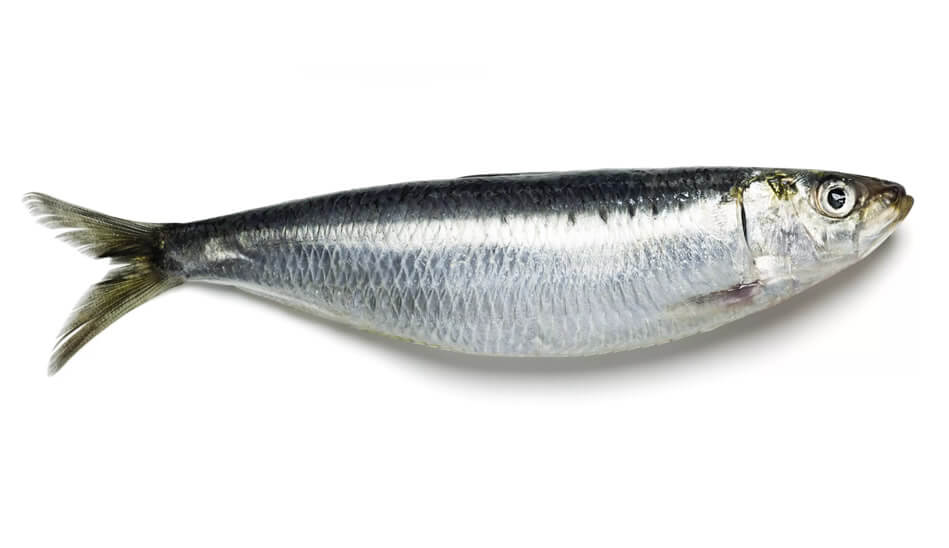
If you’re interested in using sardines as bait for salmon fishing, it’s worth noting that while salmon do feed on small fish like sardines, the availability and preference of bait can vary depending on the region and specific salmon species you’re targeting. Sardines can be effective bait for certain types of salmon, particularly in saltwater environments. Here are a few things to consider:
- Local regulations: Before using any bait for fishing, make sure to familiarize yourself with the local fishing regulations and restrictions in your area. Some locations may have specific rules regarding bait, including restrictions on live bait or the use of certain fish species.
- Freshness: It’s important to use fresh bait when fishing for salmon. Sardines should ideally be fresh, whole, and in good condition. Fresh bait tends to be more appealing to fish and can increase your chances of success.
- Presentation: When using sardines as bait, you can present them in different ways depending on the fishing technique you’re using. Some common methods include whole sardines on a hook, cut bait (sardine chunks), or using sardine-scented lures or attractants to enhance the bait’s effectiveness.
- Rigging: Consider using appropriate rigs for salmon fishing, such as a sliding sinker rig or a fishfinder rig, depending on the fishing conditions and your target species. These rigs allow the bait to move naturally in the water and increase its attractiveness to salmon.
- Experimentation: Fishing can be a trial-and-error process, so don’t be afraid to experiment with different bait presentations, locations, and techniques. If sardines aren’t yielding the desired results, you might try other bait options, such as herring, anchovies, or even artificial lures designed to mimic small fish.
Shrimp
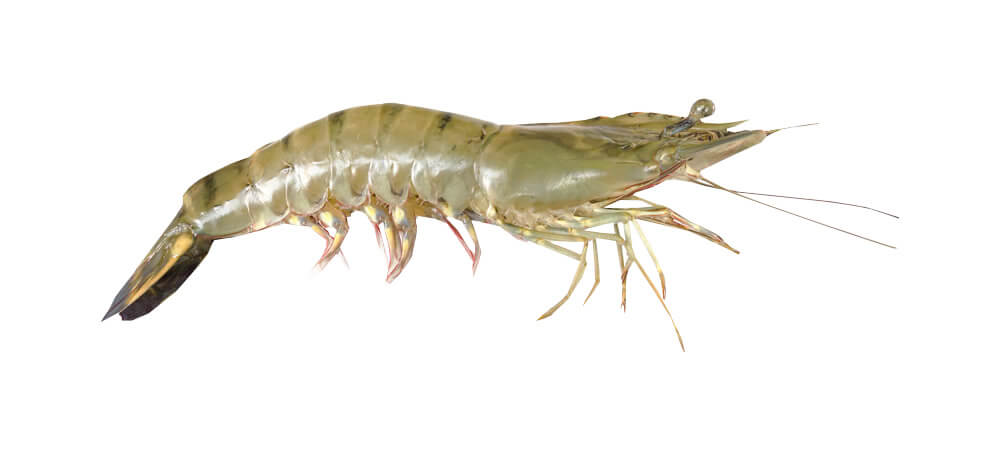
If you’re looking to use shrimp as bait for salmon fishing, it can be an effective option. Salmon are known to be opportunistic feeders and will often target a variety of prey, including shrimp. Here are some tips for using shrimp as bait for salmon fishing:
- Freshness: Use fresh shrimp whenever possible. Salmon have a keen sense of smell and are attracted to the scent of fresh bait. Avoid using shrimp that have been frozen for extended periods as they may lose their scent and become less appealing to salmon.
- Size and presentation: Choose shrimp that are of an appropriate size for the salmon species you’re targeting. Larger shrimp can be more enticing for larger salmon. Consider using whole shrimp or shrimp chunks to create a realistic presentation.
- Hook selection: Opt for strong and sharp hooks that can handle the weight and strength of salmon. Use a hook size that matches the size of the shrimp you’re using.
- Rigging: Depending on the fishing method you’re using, there are different ways to rig shrimp as bait. For example, if you’re drift fishing, you can thread the shrimp onto a bait holder hook or use a bait loop knot to secure it. If you’re trolling, you can attach the shrimp to a downrigger or a flasher rig.
- Scent enhancement: To further attract salmon, you can enhance the scent of the shrimp by using attractants or scents specifically designed for salmon fishing. Apply them to the shrimp before casting or trolling.
- Experiment with presentation: Try different techniques to find what works best in your fishing area. You can try using shrimp on its own or in combination with other bait such as herring or anchovies. Vary the depth and speed of your presentation to see what triggers a strike.
Sand Eels
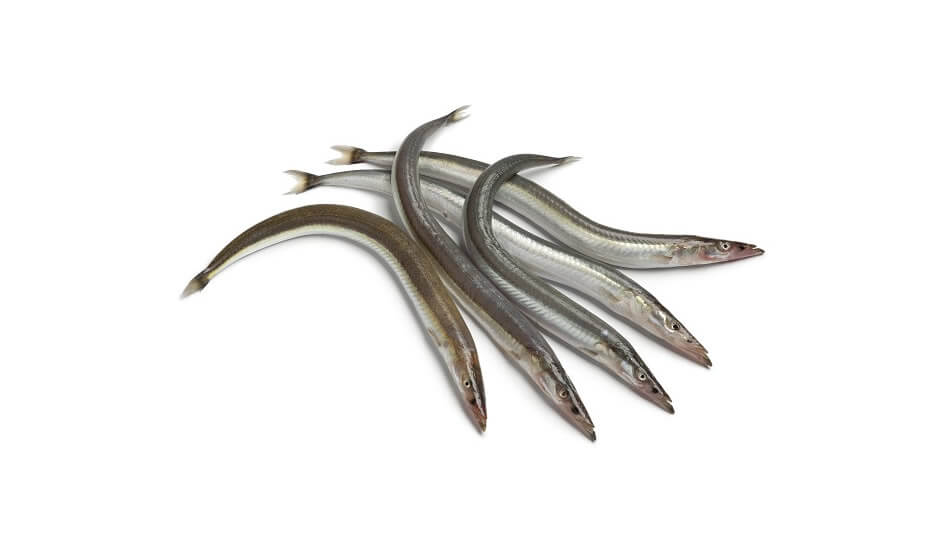
Sand eels are often used as bait for salmon fishing, especially in coastal areas where sand eels are abundant and salmon feed on them. Sand eels are small, slender fish that resemble eels but are not true eels. They are typically silver or greenish in color and have a long, slender body with a pointed snout.
When using sand eels for salmon fishing, you can either use live sand eels or artificial sand eel lures. If you have access to live sand eels, they can be highly effective for attracting salmon. You can either hook the live sand eel through the lips or thread it onto a baitfish rig. Cast the sand eel into the water and let it swim naturally. The movement of the live bait will attract salmon, enticing them to strike.
If you don’t have access to live sand eels, you can use artificial sand eel lures. These lures are designed to mimic the appearance and swimming action of sand eels. Choose lures that closely resemble the size and color of the sand eels found in the area you’re fishing. Cast the lure out and retrieve it with a steady or erratic retrieve to imitate the movement of a sand eel.
When using live sand eels, you can rig them on a baitfish rig or use a single hook setup. The rig should allow the sand eel to swim freely and naturally in the water. Make sure the hook is sharp and properly secured to increase your chances of hooking the salmon.
Salmon often feed on sand eels near the shoreline, especially during the incoming and outgoing tides. Look for areas with sandy or gravelly bottoms where sand eels are likely to be present. Rocky areas and near structures like jetties and piers can also hold salmon feeding on sand eels.
Salmon feeding patterns can vary depending on the time of day, tides, and other factors. It’s generally a good idea to fish for salmon during the early morning or late afternoon when they are more active. Research the local salmon fishing reports or consult with local anglers to determine the best times for targeting salmon feeding on sand eels in your specific location.
Cut Plug Herring
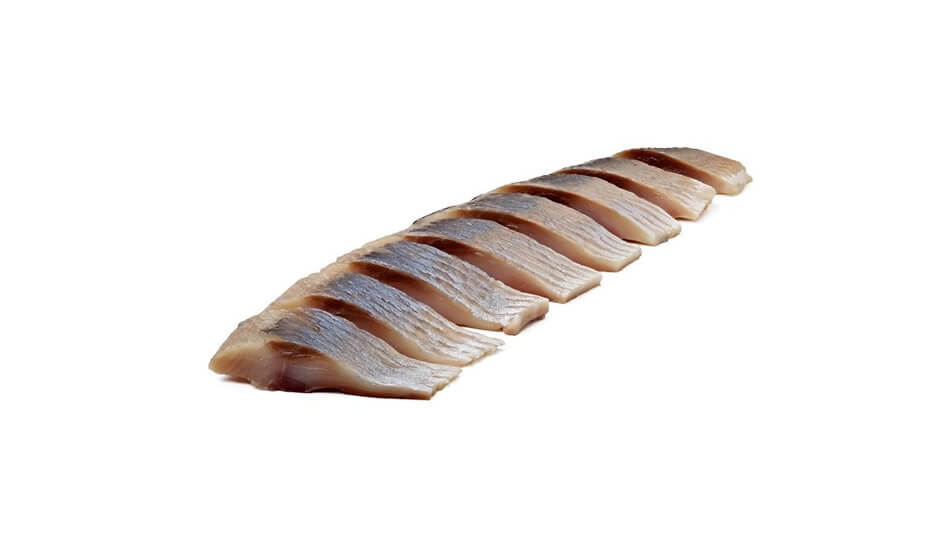
Cut plug herring is a popular bait used for salmon fishing. It is a technique where a whole herring is prepared in a way that mimics injured baitfish, attracting salmon to bite.
You’ll need whole herring, a sharp fillet knife, bait thread or elastic bands, a pair of scissors, and optionally, some scent or attractant. Choose a whole herring that matches the size of the salmon you’re targeting. Generally, herring measuring around 5 to 7 inches in length work well.
Use a knife or scaler to remove the scales from the herring’s body. Next, make a small incision along the belly from the vent (anus) to the head. Remove the guts carefully, rinsing the herring under cold water to clean it thoroughly.
Hold the herring with the belly facing up and make a 45-degree cut at the base of the tail. The cut should go about two-thirds of the way through the fish, leaving the head intact. This cut will create a triangular-shaped cavity.
Gently bend the herring to mimic a wounded fish. The bend should follow the curvature of the fish’s body. This action helps make the bait appear injured and more enticing to salmon.
Take the bait thread or elastic bands and wrap them around the herring’s body to hold the shape. Start at the tail, wrapping upward towards the head. Make sure the thread or bands are tight enough to hold the herring securely but not so tight that it distorts the bait’s shape.
Add scent or attractant: Some anglers like to enhance the bait’s attractiveness by adding scent or attractant. Apply a few drops of your preferred scent inside the cavity and on the outside of the herring. This step can help attract salmon from a greater distance.
Attach the cut plug herring to your fishing line using an appropriate rig. This could involve using a leader, swivel, and weight or a specific rig designed for cut plug herring.
When fishing, cast your line into the water and let the bait sink to the desired depth. You can experiment with different depths depending on the salmon’s feeding patterns and the conditions of the fishing spot.
Spinners

Spinners are popular lures for salmon fishing, as they can effectively mimic small fish and attract the attention of hungry salmon. When choosing spinners for salmon fishing, it’s important to consider the size, color, and design of the spinner to match the fishing conditions and the preferences of the fish.
Here are some factors to consider when selecting spinners for salmon fishing:
- Size: Choose spinners that match the size of the baitfish salmon typically feed on in your fishing location. In general, larger spinners ranging from 2 to 4 inches in length are suitable for targeting salmon.
- Color: Select spinners that imitate the natural colors of baitfish found in the area. Common colors for salmon spinners include silver, gold, chartreuse, black, and various combinations of these colors. Bright and flashy colors often work well in murky water or low-light conditions, while more natural colors can be effective in clear water.
- Blade Type: Spinners come with different blade types, such as Colorado, Indiana, and Willowleaf blades. Each blade type produces a different amount of flash and vibration. Experiment with different blade types to find the one that attracts the most attention from salmon in your fishing spot.
- Weight: Consider the weight of the spinner based on the depth you’re fishing and the current strength. Heavier spinners allow for longer casts and better control in fast-moving water, while lighter spinners work well in shallow or slow-moving water.
- Hooks: Ensure that the spinner has strong and sharp hooks suitable for catching salmon. Consider the size and quality of the hooks to ensure they can handle the powerful strikes and fights that salmon often put up.
- Additional Features: Some spinners come with additional features like swivels or beads to enhance their presentation and attract more salmon. These features can add extra action and noise to the spinner, making it more enticing to the fish.
Plugs
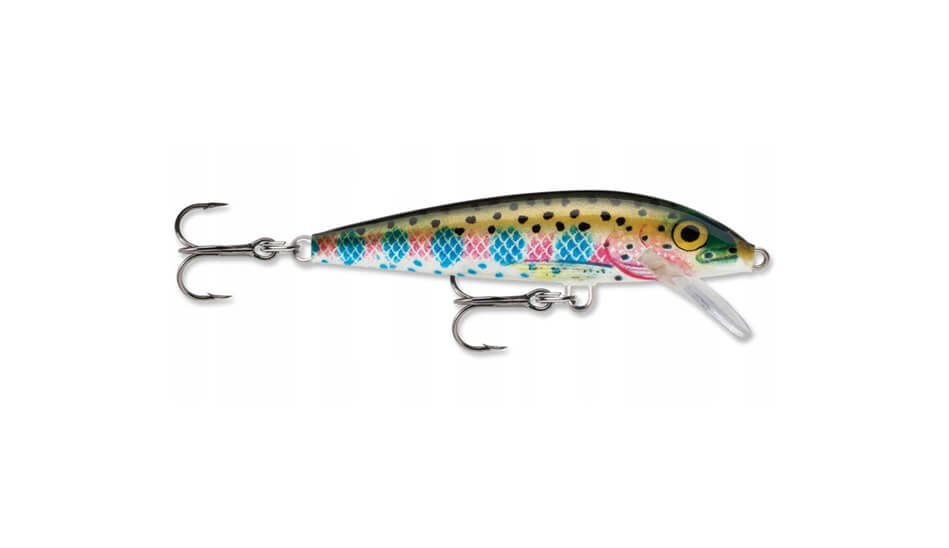
When it comes to salmon fishing, plugs can be an effective lure choice. Plugs are designed to imitate wounded or distressed baitfish, and their erratic swimming action can entice salmon to strike. Here are a few popular plug options for salmon fishing:
Wiggle Warts: These are classic salmon plugs known for their wide wobbling action. They come in various sizes and colors to match the preferences of different salmon species.
Rapala Original Floating Minnow: The Rapala Original Floating Minnow is a versatile plug that can be used for both casting and trolling. It imitates a wounded baitfish and has a realistic swimming action.
Luhr-Jensen Kwikfish: Kwikfish plugs are widely used for salmon fishing, especially when trolling. They have a wide side-to-side swimming motion and can be effective at attracting aggressive salmon strikes.
Yakima Bait FlatFish: FlatFish plugs are known for their wide, lazy swimming action. They work well for both casting and trolling and are available in various sizes and colors.
Rebel Tracdown Minnow: The Rebel Tracdown Minnow is a sinking plug that can be effective for targeting deeper salmon. It dives quickly and has a tight swimming action, making it suitable for areas with strong currents.
Storm ThunderStick: The Storm ThunderStick is a popular plug choice for salmon fishing. It has a tight wiggling action and can dive to significant depths, making it suitable for both casting and trolling.
Flies
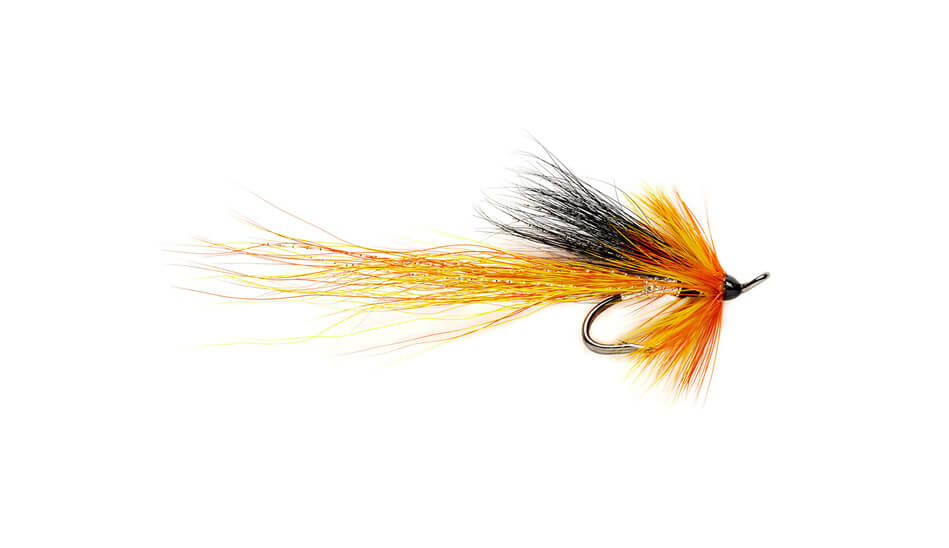
The choice of fly will depend on the species of salmon, the time of year, and the specific river or location you are fishing. Here are a few popular fly patterns for salmon fishing:
Woolly Bugger: The Woolly Bugger is a versatile fly pattern that imitates a variety of prey, including baitfish and leeches. It is effective for both Atlantic and Pacific salmon and comes in various sizes and colors.
Egg Patterns: Salmon are known for their affinity towards eggs, so egg patterns can be highly effective. These flies imitate the eggs of spawning salmon and come in a range of colors, including pink, orange, and chartreuse.
Intruder: The Intruder is a large, flashy fly pattern designed to provoke aggressive strikes from salmon. It has a combination of vibrant colors, flowing materials, and trailing hooks that make it highly enticing.
Green Butt Skunk: This classic fly pattern is particularly effective for steelhead and Pacific salmon. It features a black body with a green butt section, and its simple yet effective design can entice salmon to bite.
Ally’s Shrimp: Developed by Scottish angler Ally Gowans, the Ally’s Shrimp is a popular fly pattern for Atlantic salmon. It features a bright and colorful body with a wing and tail combination that creates a lively swimming action in the water.
Spey Flies: Spey flies are traditional patterns commonly used in salmon fishing. They have long flowing materials, such as feathers and hair, and are typically tied on large hooks. Spey flies come in various color combinations and are effective for swinging or stripping techniques.

